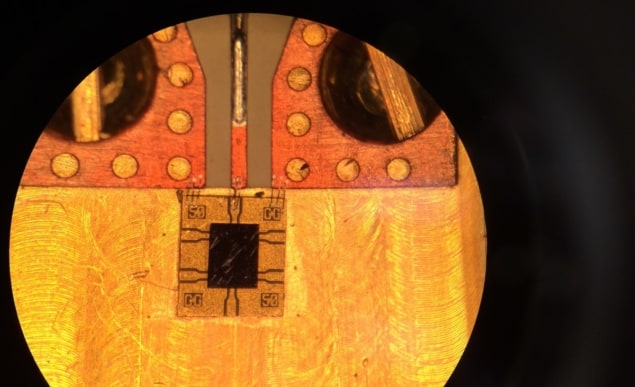
The best-ever conversion of an optical clock’s time signal to a microwave signal has been demonstrated by Takuma Nakamura, Frank Quinlan and colleagues at the National Institute of Standards and Technology (NIST) in the US. The teams achieved the result through a setup involving optical frequency combs and state-of-the-art optical detectors. Their achievement could have significant benefits for fields as wide-ranging as navigation, astronomy, and tests of fundamental physics.
By exploiting the highly stable time signals produced as electrons oscillate between atomic energy levels, today’s optical clocks enable researchers to measure time with unparalleled degrees of accuracy. Indeed, optical clocks produce much better time signals than conventional atomic clocks, which operate at much lower microwave frequencies.
However, optical clocks are difficult to use in most practical timing applications because their optical signals oscillate much too quickly to be counted by electronic devices. To take full advantage of its stability, the optical signal must be converted to an electronics-friendly microwave signal. Two decades ago, the “optical frequency comb” (OFC) was developed to make this conversion. An OFC produces femtosecond laser pulses with an optical frequency spectrum containing sharp peaks (or tones) that are evenly-spaced in frequency – much like the teeth of a comb.
Frequency gap
Importantly, the frequency gap between these tones is the same as the frequency at which the pulses are emitted by the laser – and this frequency is as stable as the optical time signal itself. When the train of comb pulses is fired at an optical detector, the output is a stable timing signal at a microwave frequency.
While this conversion is straightforward in principle, in practice it has proven very difficult to develop technology that delivers a microwave signal with the desired accuracy and stability. For one thing, the optical detectors themselves can introduce instability to the microwave signal.

Tiny optical clock is 100 times better than previous chip-based timekeepers
Now, Nakamura, Quinlan and colleagues have made an important step forward by improving both their OFC design and optical detectors. The team used signals from two optical clocks as inputs to two independent OFCs that each produced a pulse train. These pulses were sent to two different photodiode detectors to create two independent microwave signals. By comparing these two signals the team concluded that the microwave timing signals remained in phase with the clocks’ signals to within an error of just 1 in 1018. This makes the signal around 100 times more stable than the current best microwave time sources.
The team envisages numerous possible applications for these stable sources. The ability to maintain stable and accurate microwave signals over large distances would enable more effective synchronization between radio telescope arrays; improvements to radar accuracy; and better communications between satellites. Elsewhere, it could allow for more effective tests of fundamental physics and could even bring about long-awaited improvements to the current SI definition of the second.
The research is described in Science.



